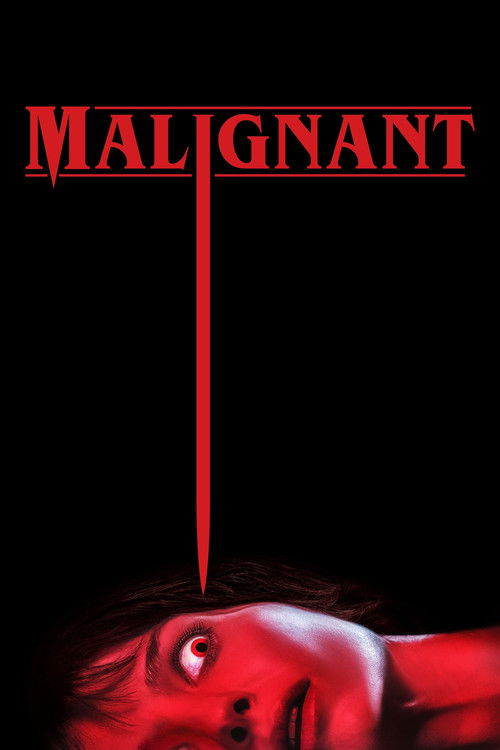When James Wan announced Malignant, he played up its giallo heritage. “I’ve always harbored this desire to make a Giallo movie, but do it my way; my version of Giallo,” he told Bloody Disgusting. And while it has some surface level elements, Malignant owes more 80s exploitation fare than it does Dario Argento. Wan’s Giallo has the blank trench coat and gloves, the ludicrous murder weapon, the jarring score, and little else.
When the pregnant Madison Mitchell comes home from work sick and exhausted, her husband Derek immediately starts giving her a hard time. “I need some rest,” she says. “No, maybe you need to stop getting pregnant,” Derek says. “How many times do I have to watch my children die inside of you?” The argument shifts from emotionally to physically abusive when Derek grabs Madison by the face and shoves her into the bedroom wall, leaving a massive dent.

“Oh, I’m just dressed like this for a gag; it doesn’t have anything else to do with anything.”
As Derek runs off to get a first aid kit, Madison closes and locks the bedroom door, then loses consciousness. That night, a mysterious intruder beats Derek to death. It is the first in a series of brutal murders, and a distraught Madison sees them all through the killer’s eyes.
One of the problems with Malignant is the apparent conscious callbacks to the last several decades of genre entertainment. The Simion Research Hospital, the Seatle police department, and the killer’s lair all have an oversized melodramatic sense, like they came out of a Tim Burton Batman film. Police detectives. But other sets are very naturalistic. Which could, I guess, be intended to disorient in a creative way. Lots of movies have a sort of dreamland vs real-world design to underscore a character’s mental state, but Malignant seems to choose based on whether we’re having a set-piece scene, not based on any internal logic.
Detectives Kekoa Shaw and Regina Moss have a vague X-Files sense about them that’s more about how they are framed and lit in a scene, although Kekoa shares some of Mulder’s credulity and Regina Scully’s unrestrained skepticism. The story itself is a pure 80s monster movie, with a few throwbacks to 50s atomic-era exposition. Hypnotic regression even makes an appearance.

“Oh, great. Not another monster of the week.”
Discussing how would spoil a lot of the movie. The twist isn’t obvious — Wan even uses typography in the credits to telegraph it. But Wan’s dedication to the bit might surprise… unless you know who Frank Henenlotter is.
Wan also tells Bloody Disgusting:
I would go all the way to the back of the video store to the horror section because that’s where they usually keep the horror section. They were too embarrassed to have it upfront. And then, once I get to that section, I would venture even deeper into the horror section, into the back shelves, and take down a video cover that I’ve never seen before, but the cover was so cool. I don’t know what the movie is. That is how I describe Malignant. Malignant is that movie that I take from the back shelves.”
Wan’s Malignant budget was $40 million. You can’t make a back-shelf movie with that much money. The weird, ofbeat, unusual films at the back of the video store are there because they have no budget, no Hollywood VFX crew, and no marketing team. The best of these, like Evil Dead or Night of the Living Dead, rise above the budget and technical limitations to tell an extraordinary story in a surprising way. Even when they don’t work, like Llamageddon, they can be charming. A multi-million dollar movie with all the flaws of films made on one percent of the budget doesn’t just seem lazy, it seems like a waste.

“I’m a huge fan!”
Anyway, Is Wan satirizing the old movies? If so, it’s a grim sort of humor — and punching down, to boot. Is he trying to imitate them? Content-wise, surely; but why imitate the flaws? Or is Wan using “it’s an homage” as an excuse to paper over Malignant’s deficiencies? This seems more likely, but it’s hard to tell. That’s a failure all on its own.
There are some fun action sequences and impressive design. Madison’s fugue states come with some stunning effects and clever camera tricks. There’s an amazing overhead shot that resembles Argento’s two-minute inspection of roof tiles from Tenebre — but actually serves the plot. Visually, Malignant is quite an achievement. It’s, unfortunately, lacking in much else. But it’s Wan’s professed audience who will notice the most.

